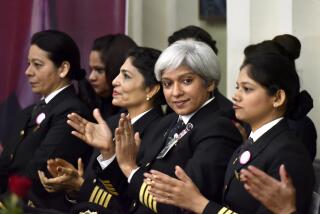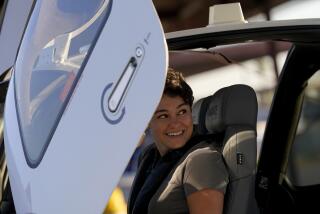Air Controllers on Course for ‘Burnout,’ Union Official Says
- Share via
WASHINGTON — Warning that the nation’s air traffic controllers are “approaching a burnout stage,” a top union official urged the government to hire more controllers and replace archaic equipment still in use at many airports.
While he said that the nation’s airports are currently safe, Mike McNally, executive vice president of the National Air Traffic Controllers Assn., cited problems that could undermine the safety of air travel: outdated equipment, power outages, excessive overtime and chronic understaffing.
The Federal Aviation Administration and Transportation Secretary Frederico Pena announced a 10% pay raise for controllers at several airports earlier in the week, not including Los Angeles International.
Speaking at a press conference Wednesday, McNally called the raises a good start but said that they are “only a partial fix of the ultimate problem.”
Referring to the issues that led to a 1981 controllers’ strike--such as pay, staffing levels and equipment problems--McNally said that today’s problems are nearly identical but are compounded by fewer controllers, increased air traffic and outdated equipment. There is 35% more air traffic and 2,000 fewer controllers than in 1981, when President Reagan fired striking controllers, McNally said. He added that air traffic is projected to increase 50% by 2000. In 1995, there were almost 1 billion air travelers.
Under the FAA’s current $8.3-billion budget, 600 controllers are expected to be hired. But the union said that 2,000 more controllers are needed.
The Air Traffic Control Assn. also is pressing for new equipment and a new facility classification that would put airports into 12 categories instead of the current five.
The new system would base controllers’ salaries on more than airport traffic and would include geography and overall airport facilities.
McNally said that some airports are operating with equipment that dates to the 1940s. “No radar, no radio direct communication with airplane. . . . When you fly over the ocean, [controllers] use grease pencils, plastic on a map, and you use strips of paper with checkpoints across the ocean.”
More to Read
Inside the business of entertainment
The Wide Shot brings you news, analysis and insights on everything from streaming wars to production — and what it all means for the future.
You may occasionally receive promotional content from the Los Angeles Times.










